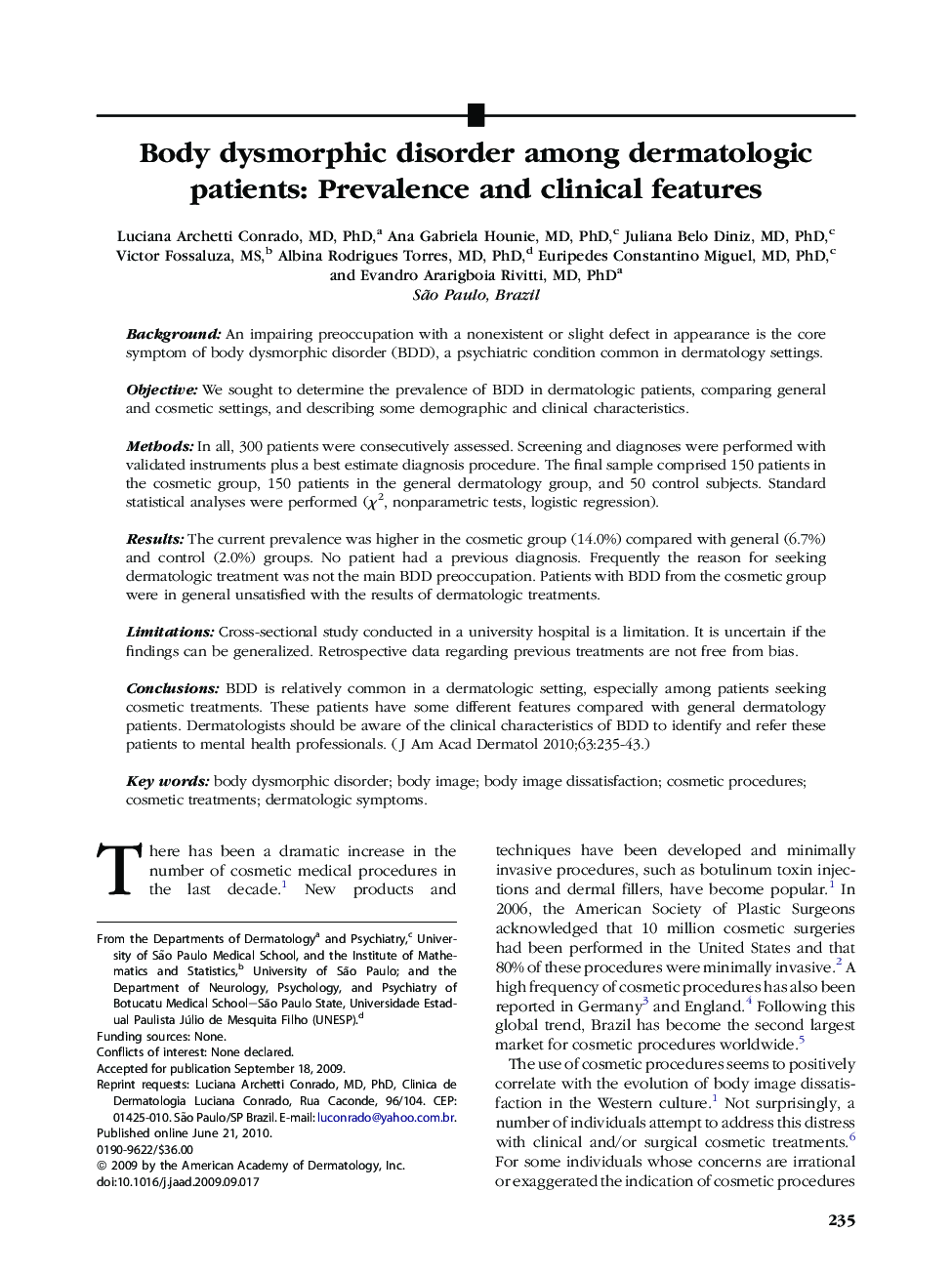| Article ID | Journal | Published Year | Pages | File Type |
|---|---|---|---|---|
| 3208332 | Journal of the American Academy of Dermatology | 2010 | 9 Pages |
BackgroundAn impairing preoccupation with a nonexistent or slight defect in appearance is the core symptom of body dysmorphic disorder (BDD), a psychiatric condition common in dermatology settings.ObjectiveWe sought to determine the prevalence of BDD in dermatologic patients, comparing general and cosmetic settings, and describing some demographic and clinical characteristics.MethodsIn all, 300 patients were consecutively assessed. Screening and diagnoses were performed with validated instruments plus a best estimate diagnosis procedure. The final sample comprised 150 patients in the cosmetic group, 150 patients in the general dermatology group, and 50 control subjects. Standard statistical analyses were performed (χ2, nonparametric tests, logistic regression).ResultsThe current prevalence was higher in the cosmetic group (14.0%) compared with general (6.7%) and control (2.0%) groups. No patient had a previous diagnosis. Frequently the reason for seeking dermatologic treatment was not the main BDD preoccupation. Patients with BDD from the cosmetic group were in general unsatisfied with the results of dermatologic treatments.LimitationsCross-sectional study conducted in a university hospital is a limitation. It is uncertain if the findings can be generalized. Retrospective data regarding previous treatments are not free from bias.ConclusionsBDD is relatively common in a dermatologic setting, especially among patients seeking cosmetic treatments. These patients have some different features compared with general dermatology patients. Dermatologists should be aware of the clinical characteristics of BDD to identify and refer these patients to mental health professionals.
